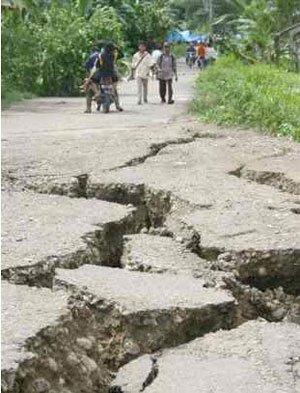
Earthquake in Peru – we measure earthquakes using logarithms
What are logarithms?
Logarithms are a way of writing numbers using exponents. “Log 100” means the exponent you’d need to use to get 100 starting from 10. That would be 2, because 102 = 100. So Log 100 = 2, and Log 1000 = 3.
What are exponents?
All our math articles
An order of magnitude
Logarithms are useful for thinking about big numbers in general terms, when you don’t need to get too precise. One example of using logarithms in everyday life is when you say one thing is “an order of magnitude” bigger than another. That means it’s at least 10 times as big, but not 100 times as big.
Another example of using logarithms in everyday life is when you say somebody’s salary is “in the 6 figures” – it’s somewhere between $100,000 and a million dollars, but you don’t know, or don’t want to say, exactly what it is. It’s why we find it exciting when somebody turns ten and moves into “double digits“.
If something is “growing exponentially”, it means that it is getting bigger faster and faster. If you weighed 100 pounds today, and 1000 pounds next year, and 100,000 pounds the year after that, you’d be growing exponentially. You don’t really grow exponentially, but when you’re pregnant, the unborn baby grows exponentially.
Logarithms and earthquakes
Another way ordinary people use logarithms is in talking about how strong an earthquake was: a 2.0 earthquake is ten times as strong (an order of magnitude bigger) than a 1.0 earthquake. A 9.0 earthquake is 10 times bigger than an 8.0 earthquake. That’s a lot bigger!
Earthquakes and tsunamis
And plate tectonics
So a 5.0 earthquake is a hundred times as strong as a 2.0 earthquake. A 6.0 earthquake is a thousand times stronger than a 2.0 earthquake. I’ve been in a 4.5 earthquake, and I definitely hope I am never in one a hundred times stronger than that!
More about exponents
More about factors
Bibliography and further reading about numbers:




